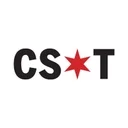What Is an SR22? Insurance After a Mistake
If you've had a DUI or another serious offense, you may need an SR22 insurance form. Here’s what to do.
Many, or all, of the products featured on this page are from our advertising partners who compensate us when you take certain actions on our website or click to take an action on their website. However, this does not influence our evaluations. Our opinions are our own. Here is a list of our partners and here's how we make money.
An SR22 insurance form is an official document that proves your auto insurance policy meets your state’s coverage requirements.
Certain states require insurers to file SR22 forms for drivers who have been convicted of a serious driving offense, or who are caught driving without insurance or a license.
Full coverage insurance with an SR22 costs $3,744 on average after a DUI, according to NerdWallet’s January 2024 analysis.
An SR22 insurance form is an official document that proves your auto insurance policy meets your state’s coverage requirements.
Certain states require insurers to file SR22 forms for drivers who have been convicted of a serious driving offense, or who are caught driving without insurance or a license.
Full coverage insurance with an SR22 costs $3,744 on average after a DUI, according to NerdWallet’s January 2024 analysis.
Even though it might be called “SR22 insurance,” an SR22 form isn’t actually an auto insurance policy. It’s an official document filed with state authorities to prove you’ve bought the minimum liability insurance required in your state. The SR22 form may also be called a certificate of financial responsibility.
An SR22 allows you to keep or reinstate your driving privileges after serious or repeated offenses. By submitting this form, insurance companies assure your state’s motor vehicle or insurance department that you’ll maintain coverage for a certain period of time. If you don’t, the insurer will alert your state, and your driver’s license could be suspended or revoked.
Having to file an SR22 is no one’s idea of fun. You’ll pay higher car insurance premiums than a driver with a clean record, and you’ll be limited in your choice of insurers. But shopping around for the cheapest rates can help. Here’s what you need to know.
See what you could save on car insurance
Easily compare personalized rates to see how much switching car insurance could save you.
Who needs an SR22 insurance form
Not everybody needs an SR22. You might be required to have an SR22 if:
You’ve been convicted of DUI, DWI or another serious moving violation.
Your auto insurance policy did not meet your state’s coverage requirements.
You’ve gotten too many traffic tickets in a short time, such as three or more speeding tickets within six months.
You didn’t pay court-ordered child support.
Your driver’s license has been suspended or revoked.
You were caught driving without a license.
For certain convictions in Florida and Virginia, you may be ordered to file a similar form called an FR44. This requires a higher level of liability coverage than the state’s minimum.
Not all states require an SR22 or FR44. Delaware, Kentucky, Minnesota, New Mexico, New York, North Carolina, Oklahoma and Pennsylvania don’t require residents to carry an SR22 form after a violation. However, if you move to one of these states with an SR22 from another state, you still need to keep it until the end of your required period.
If you need an SR22, you’ll find out through a letter from your state department of motor vehicles, or a judge will let you know in your traffic court hearing.
How to get an SR22
Your insurer is responsible for filing an SR22 form for you. All you need to do is let them know you need one and they’ll take care of the rest. Unfortunately, many insurance companies won’t provide this service. Drivers required to carry an SR22 insurance form might have to switch insurance companies.
Here’s how to get an SR22 insurance form:
Contact your current auto insurance company to ask if they provide SR22 forms and, if they do, get a new quote. If you don’t already have auto insurance, you’ll need to buy a policy in order to get your driving privileges restored.
Get two to three quotes from other insurers that can file an SR22 form so you can compare costs with your current company. Insurance rates can go way up for drivers who need an SR22, so looking at different quotes will help you find the best deal and save what you can.
Pay for your new policy and get back on the road. Insurers may require you to pay the entire premium upfront — either six or 12 months’ worth.
Once your coverage is in place, the insurer will file the SR22 insurance form with your state’s traffic authorities.
You might find that your current provider cancels your coverage or declines to renew your policy in light of your SR22. Insurance companies that specialize in covering high-risk drivers may also deny you coverage. In that case, you can turn to your state’s high-risk insurance pool. To start, find your state in the directory of the Automobile Insurance Plan Service Office.
The cost of SR22 insurance
Insurance after a DUI, hit-and-run, reckless-driving conviction or other violation can become very expensive. Drivers with events like these on their records are deemed to be a higher risk to insure, which means insurance companies will likely charge higher rates for coverage. Add to this a smaller pool of options to choose from, since not all insurers will file SR22 forms, and you’re left with very expensive options.
The key to getting cheap insurance with an SR22 is to shop around and compare different companies’ quotes to make sure you’re paying the lowest premium possible.
For context, here are the median annual rates for full and minimum auto insurance for drivers required to file an SR22 form after a DUI, a hit and run, reckless driving or a speeding violation.
Driver's history | Average full coverage rate per year | Average minimum coverage rate per year |
|---|---|---|
DUI | $3,744 | $1,167 |
Hit-and-run | $3,780 | $1,206 |
Reckless driving | $3,580 | $1,142 |
Speeding | $2,572 | $805 |
Filing an SR22 insurance form also comes with an administrative cost. Typically, you can expect a charge of around $25, depending on your state.
See what you could save on car insurance
Easily compare personalized rates to see how much switching car insurance could save you.
How to get cheap SR22 insurance
Although insurance rates will be higher for drivers required to file an SR22 form, there are still ways to get a better deal:
Shop around. Many insurers don’t file SR22s for policyholders. That’s why it’s important to find the insurers that do and compare their quotes to find the cheapest option with an SR22.
Ask about discounts. Take advantage of discounts for things like bundling multiple insurance policies, having a car with anti-theft technology, or even your age and profession.
Drop unnecessary coverage. You can lower your car insurance premiums by getting rid of optional coverage types you no longer need. For example, comprehensive and collision insurance cover repairs for damage to your vehicle in a variety of situations, up to the market value of your car. If you own an older car that’s not worth much, you can likely drop these coverage types.
Raise your deductible. A car insurance deductible is the amount of money you pay out of pocket before your car insurance kicks in. The higher your deductible, the lower your car insurance premium. Just make sure you have enough money stashed away to cover the higher amount.
Companies that file SR22 insurance forms
Not all companies Insurers that specialize in coverage for high-risk drivers typically offer SR22 filing. They include:
Many of the largest auto insurers also offer SR22 insurance forms, including:
*USAA is available only to active military, veterans and their families.
SR22 without a car
If you don’t own a car, you may still need an SR22 or FR44 filed on your behalf to get your driver’s license reinstated. Some insurers will file them for you if you buy non-owner car insurance.
This insurance will cover any damage you cause while driving a vehicle you don’t own, such as a car you’ve borrowed or rented.
Non-owner insurance can also help you avoid a lapse in coverage. Drivers with a gap in coverage can face higher premiums because insurers view them as a risk. If you don’t have a break in coverage, you’ll qualify for better rates when your SR22 requirement is over.
What to do after an SR22
In most states, an SR22 requirement lasts three years. If your policy lapses while you have an SR22, your insurer is required to alert the state and your license will be suspended.
When your requirement ends, the SR22 doesn’t automatically fall off your insurance policy. Make sure to let your insurance company know you no longer need it.
This is also a good time to shop again for the cheapest insurance policy for you. Rates typically remain high for three to five years after you’ve caused an accident or had a moving violation. If you shop around just after the three- and five-year marks, you may find lower premiums.
NerdWallet found median rates based on public filings obtained by pricing analytics company Quadrant Information Services. For "good drivers," we examined rates for men and women for all ZIP codes in any of the 50 states and Washington, D.C. Although it’s one of the largest insurers in the country, Liberty Mutual is not included in our rates analysis due to a lack of publicly available information.
In our analysis, “good drivers” had no moving violations on record; a “good driving” discount was included for this profile.
These are median rates, and your rate will vary based on your personal details, state and insurance provider.
Sample drivers had the following coverage limits:
$100,000 bodily injury liability per person.
$300,000 bodily injury liability per accident.
$50,000 property damage liability per accident.
$100,000 uninsured motorist coverage per person.
$300,000 uninsured motorist coverage per accident.
Collision coverage with a $1,000 deductible.
Comprehensive coverage with a $1,000 deductible.
In states where required, minimum additional coverages were added.
To find median annual rates for drivers with an SR22, we analyzed rates from all states except the following eight states, which do not require SR22s: Delaware, Kentucky, Minnesota, New Mexico, New York, North Carolina, Oklahoma, Pennsylvania.
For drivers with a DUI, we added a single drunken driving violation and an SR22 requirement. For drivers with a hit-and-run on their record, we added a single hit-and-run conviction and an SR22 requirement. For drivers with reckless driving on their record, we added a single reckless driving conviction and an SR22 requirement. For drivers with a speeding violation, we added a single speeding violation for driving 16 mph over the speed limit and an SR22 requirement.
We used a 2020 Toyota Camry LE in all cases and assumed 12,000 annual miles driven. We analyzed rates for 35-year-old drivers.
These are rates generated through Quadrant Information Services. Your rates will be different.






